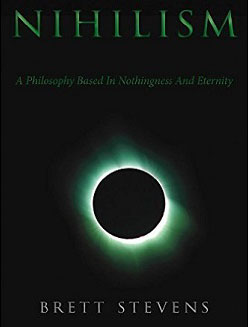What is Consciousness?
One thing that keeps life interesting: mysteries persist.
Much of the life we think of as everyday and mundane is unknown to us except as a manifestation. We live it, but have no idea why it is here or how.
For example, we still do not know what creates consciousness, or even how to define it:
But how is a collection of neurons capable of learning? Hengen suggests that brains become learning machines only when they reach a special state called “criticality.” A concept borrowed from physics, criticality describes a complex system that is at the tipping point between order and chaos. At this razor’s edge, brains are primed to gain new information, Hengen said. “Brains need to reach criticality to think, remember and learn.”
Shew explained that physicists first developed a deep understanding of criticality as a way to describe magnets and other materials. Around the turn of the 21st century, these ideas were expanded to explain a broader range of complex systems, including avalanches, earthquakes and, ultimately, living systems and the brain.
A defining aspect of critical systems is that they look the same at any scale: A sand pile on the brink of an avalanche has the same slope whether the pile is tiny or mountainous. In the brain, criticality is constant whether it’s measured in a handful of neurons or an entire region. Likewise, brain patterns that unfold in time are startlingly similar when considered in milliseconds or hours. “This matches our intuitive understanding of how brains work,” Hengen said. “Our internal experiences span milliseconds to months. They don’t have a scale.”
On the surface, what is the mystery? We are thinking machines that adapt to the world. And yet, a machine would not be conscious or consider itself to have consciousness. It would simply process data.
And yet, the machine has to make choices for itself, based not only on its own survival but the conditions around it. Consciousness requires a self-referentiality that enables the machine to make choices:
This reveals a crucial dimension of agency: the ability to make choices in response to new and unforeseen circumstances.
Most likely, our definition of “consciousness” includes agency, since that which is aware can only know itself when making decisions.
Some argue that this self-awareness produces consciousness by reflecting on itself:
Douglas Hofstadter, cognitive scientist and author of the Pulitzer Prize-winning book Gödel, Escher, Bach: An Eternal Golden Braid (1979), argues that the self emerges in those systems that have the capacity to represent or model the world and themselves. This creates a self-referential feedback loop whereby cognition reflects upon itself, producing a nexus of experience and control. Processes like recurrent feedback loops lay the foundation for the emergence of consciousness and, by extension, the sense of a personal self.
This shows us the hard problem of consciousness namely that consciousness includes experience, a form of self-awareness paired with external input:
What makes the hard problem hard and almost unique is that it goes beyond problems about the performance of functions. To see this, note that even when we have explained the performance of all the cognitive and behavioral functions in the vicinity of experience—perceptual discrimination, categorization, internal access, verbal report—there may still remain a further unanswered question: Why is the performance of these functions accompanied by experience?
Others argue for pure materialism, or consciousness arising from material interactions, through quantum entanglement of photons:
Entanglement means the two-photon state is not a classical combination of two photon states. Instead, measuring or interacting with one of the photons instantly affects the same property of the second photon, no matter how far away it is.
Entanglement has been demonstrated for a system whose members are over 1,000 km apart. Nothing like it exists in classical physics; it is purely a quantum phenomenon. Here entanglement would raise the possibility of much faster signaling along the sections of myelin that encase segments of the axon’s length.
One possibility, the authors write, is that the entanglement of photons could transform into entanglement along potassium ion channels in the neuron. If so, the opening and closing of one channel may affect the performance of another somewhere else.
However, materialism has its limits, namely that it generally reduces thinking to chemical or electromechanical processes:
They seem to hold merely that mental processes are dependent on or have evolved from material ones.
Another theory suggests an electromagnetic root to consciouness, operating like a digital computer:
Each ‘firing’ event involves the movement of electrically charged atoms called ions in and out of the neurons. That movement triggers a kind of chain reaction that travels from one nerve cell to another via logical rules, roughly analogous to the AND, OR and NOT Boolean operations performed by today’s computer gates, in order to generate outputs such as speech. So, within milliseconds of him glancing at his stele, the firing rate of millions of neurons in Katumuwa’s brain correlated with thousands of visual features of the stele and its context in the room. In this sense of correlating with, those brain neurons would supposedly know at least some aspects of Katumuwa’s stele.
Others argue that materialism cannot explain consciousness, whether in classical or quantum form:
The truth is that no account of what goes on at the mechanistic level of the brain can shed any light whatsoever on why consciousness exists. No theory can explain why the brain shouldn’t work exactly as it does, yet without giving rise to the feeling we all have of “what it is like to be.” And there is, I believe, a very simple reason for this. The brain does not produce consciousness at all, any more than a television set creates the programs that appear on its screen. On the contrary, the brain filters and restricts consciousness, just as our senses limit the totality of experience to which we might otherwise have access.
Some point to a mathematical origin, namely that a certain amount of complexity gives rise to a type of processing that by its nature becomes capable of agency:
The dividing line between cause and effect, prior and posterior, is defined as the point at which the physical (forward) relations between the unknowns and new data are introduced; we shall show that hierarchical/empirical Bayes represents a breach of logical causality, producing posterior results which masquerade as prior information, with serious consequences for inferences concerning the physical world.
The Hindus posited consciousness as a universe discovering itself through self-aware parts, and some analyses of consciousness suggest self-discovery by something larger than the self:
Now here’s the point: When we fully digest that the mind is the activity of an evolved brain, it radically transforms our view of the mind’s place in the universe – and our view of the universe itself. The physical universe ceases to be an unconscious object, observed and explored by conscious minds which somehow stand above or outside it. Conscious minds are part of the physical universe, as much as rocks and potato peelers. Our consciousness is not simply consciousness of the universe; our consciousness is a part of the universe, and thus the universe itself is partially conscious. When you contemplate the universe, part of the universe becomes conscious of itself.
In this view, the fragmentation of a consciousness into different parts which can analyze each other creates the sensation of consciousness, and the same may occur at a smaller level among parts of the brain.
In a twist on this, some researchers see cosmopsychism as an explanation for how large patterns arise from smaller versions of the same:
However, a number of scientists and philosophers of science have recently argued that this kind of ‘bottom-up’ picture of the Universe is outdated, and that contemporary physics suggests that in fact we live in a ‘top-down’ – or ‘holist’ – Universe, in which complex wholes are more fundamental than their parts. According to holism, the table in front of you does not derive its existence from the sub-atomic particles that compose it; rather, those sub-atomic particles derive their existence from the table. Ultimately, everything that exists derives its existence from the ultimate complex system: the Universe as a whole.
The American philosopher Jonathan Schaffer argues that the phenomenon of quantum entanglement is good evidence for holism. Entangled particles behave as a whole, even if they are separated by such large distances that it is impossible for any kind of signal to travel between them. According to Schaffer, we can make sense of this only if, in general, we are in a Universe in which complex systems are more fundamental than their parts.
Others find consciousness to be irreducible because consciousness is a force like gravity that occurs in all areas of the universe:
How can there be one mathematical rule for the external objective world before a measurement is made, and another that jumps in after the measurement occurs?
The high ground of materialism deflates when followed to its quantum mechanical roots, because it then demands the acceptance of metaphysical possibilities that seem no more ‘reasonable’ than other alternatives.
There is also the more radical possibility that some rudimentary form of consciousness must be added to the list of things, such as mass or electric charge, that the world is built of.
What makes consciousness so difficult is that it has no specific context and is both its own object and subject. This brings up questions of intentionality as a measurement of consciousness:
This idea is sometimes expressed as the claim that “consciousness is always consciousness of something.”
Some argue that intentionality is present in all objects to varying degrees or is a property of the universe, suggesting that consciousness is not just emergent but a function of embodied cognition or interaction between environment and agent:
In general, the problem with reductionist approaches is the failure to recognize that the lower-level branches, conceptually speaking, only make sense in a higher-level (tissue, organ, system, social, etc.) context.
The underlying idea is that in order to account for an agent’s behavior we must treat it scientifically on a par with the environment in which the system is acting. In this way, an embodied cognitive science rejects the metaphor of cognition as a centralized process. Cognition is rather an emergent and extended self-organizing phenomenon whose explanation requires the simultaneous scientific understanding of neural, body and environmental factors as they interact with each other in real time.
This form of monism argues, in a sense similar to panentheism, that consciousness occurs in a quantum state from the interaction of objects with each other:
Dualism holds that consciousness is separate and distinct from physical matter—but that then raises the question of how consciousness interacts and has an effect on the physical world.
Panpsychism offers an attractive alternative solution: Consciousness is a fundamental feature of physical matter; every single particle in existence has an “unimaginably simple” form of consciousness, says Goff. These particles then come together to form more complex forms of consciousness, such as humans’ subjective experiences.
One interpretation of the theory holds that “any system is conscious,” says Chalmers. “Rocks will be conscious, spoons will be conscious, the Earth will be conscious. Any kind of aggregation gives you consciousness.”
This type of consciousness can be observed most readily through associative learning in plants, which do not need a thinking brain to react as if they were conscious:
Here we show that this type of learning occurs in the garden pea, Pisum sativum. By using a Y-maze task, we show that the position of a neutral cue, predicting the location of a light source, affected the direction of plant growth. This learned behaviour prevailed over innate phototropism. Notably, learning was successful only when it occurred during the subjective day, suggesting that behavioural performance is regulated by metabolic demands. Our results show that associative learning is an essential component of plant behaviour. We conclude that associative learning represents a universal adaptive mechanism shared by both animals and plants.
This model throws over dualism and materialism for monism, the idea that the universe is formed of an informational or thought-like substrate and matter is an extension of that:
[Monism] refers to the view that the universe has its origin in one basic principle (e.g., mind, matter) and that its structure is one unitary whole in accordance with this principle—that is, that there is only a single kind of reality.
In contrast, metaphysical (versus moral, although one leads to the other) dualism suggests that thought and matter are opposites:
Examples of epistemological dualism are being and thought, subject and object, and sense datum and thing; examples of metaphysical dualism are God and the world, matter and spirit, body and mind, and good and evil. Dualism is distinguished from monism, which acknowledges only one principle, and from pluralism, which invokes more than two basic principles.
Monism supports using induction over deduction to understand the universe based on a presumption of its consistency. Some argue for abduction or “inductive deduction” instead:
A familiar example is that of the detective who infers the identity of a certain criminal from the evidence at the scene of the crime. Sherlock Holmes erroneously calls such reasoning “deduction”; it is more properly called abduction, or “inference to the best explanation.”
Induction requires a belief in the logicality of the world, or a parallelism between or unity among matter and thought/logic. This presupposes the ultimate consistency of the universe which makes sense because the anchor of logic is consistency.
This shows us a practical logic based on means and standard distributions instead of exceptions:
Descartes’s philosophy was dualistic, making a complete split between mind and matter.
Plato thought that the kinds of a priori reasoning typically used in mathematics and geometry involve the “recollection” (anamnesis) of temporarily forgotten thoughts from a previous life.
For example, from the fact that every death cap mushroom (Amanita phalloides) anybody has ever sampled has been poisonous, it would be reasonable to conclude that all death cap mushrooms are poisonous, even though it is logically possible that there is one such mushroom that is not poisonous
Some argue the proof for a monist supposition, in which the will of the gods and the tendencies of matter are parallel, through how fine-tuned the universe to the task of supporting life:
The two standard explanations of the fine-tuning are theism and the multiverse hypothesis. Theists postulate an all-powerful and perfectly good supernatural creator of the Universe, and then explain the fine-tuning in terms of the good intentions of this creator.
This line of thinking takes us beyond scientism or a bias toward testable materials science:
However, a healthy pro-science attitude is not the same thing as “scientism,” which is the view that the scientific method is the only way to establish truth. As the problem of consciousness is revealing, there may be a limit to what we can learn through science alone.
Perhaps the most worked out form of scientism was the early 20th-century movement known as logical positivism. The logical positivists signed up to the “verification principle,” according to which a sentence whose truth can’t be tested through observation and experiments was either logically trivial or meaningless gibberish. With this weapon, they hoped to dismiss all metaphysical questions as not merely false but nonsense.
These days, logical positivism is almost universally rejected by philosophers. For one thing, logical positivism is self-defeating, as the verification principle itself cannot be scientifically tested, and so can be true only if it’s meaningless.
What would a Hessianist argue? The universe ultimately tends toward the production of power, goodness, health, stability, variety, resiliency, and other attributes of that which can adapt to context shifts and events that are exceptions to the norm.
A Hessianist might argue that merely reactive brains develop complexity to the point where they can generate the arbitrary, and at that point, must decide what is real and consistent versus random. This ordering process requires awareness of self since it is organizing the self.
In the Hessian worldview, the universe produces intelligence in balance to the tradeoff in information and energy. It is forever refining its structure, and to that end, consciousness is useful and therefore, inevitable.
Tags: awareness, consciousness, dualism, materialism, metaphysical dualism, panentheism, panpsychism










